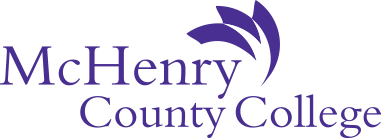Prehospital Emergency Care, AAS
In cooperation with Northwestern Medicine and the McHenry Western Lake County EMS System, MCC provides specialized emergency medical technician courses for those interested in becoming professionally trained emergency medical personnel. Earn your Prehospital Emergency Care, AAS and learn to stabilize accident victims and others in medical crisis at the scene before transporting them to a health care facility.
Stackable MCC certificates include:
Emergency Medical Technician Certificate > Paramedic Certificate building up to the Prehospital Emergency Care, AAS
MCC also offers you the opportunity to cross-train through our Fire Science program.
Apply to the 2025-2026 Paramedic Program »
Information about the 2025-2026 Paramedic Program Application and Orientation »
Working as an EMS provider requires significant physical strength, dexterity, and the ability to function in very adverse environments with exposure to numerous safety risks typically found at emergency scenes. Can you meet or exceed these EMS Provider Functional Requirements and Physical Expectations?
CAAHEP Accreditation Statements
The McHenry County College Paramedic program is accredited by the Commission on Accreditation of Allied Health Education Programs (www.caahep.org) upon the recommendation of the Committee on Accreditation of Educational Programs for the Emergency Medical Services Professions (CoAEMSP).
The minimum expectations goal of the program is, "to prepare competent entry-level Paramedics in the cognitive (knowledge), psychomotor (skills), and affective (behavior) learning domains with or without exit points at the Advanced Emergency Medical Technician, and/or Emergency Medical Technician, and/or Emergency Medical Responder levels."
To contact the Commission on Accreditation of Allied Health Education Programs (CAAHEP)
25400 U.S. Highway 19 North, Suite 158
Clearwater, FL 33763
www.caahep.org
To contact the Committee on Accreditation of Educational Programs for the Emergency Medical Services Professions (COAEMSP)
8301 Lakeview Parkway, Suite 111-312
Rowlett, TX 75088
(214) 703-8445 | FAX (214) 703-8992
www.coaemsp.org
Credit for Experiential Learning Disclaimer
Due to licensing regulations, the MCC Paramedic program does not recognize credit for experiential learning.
- EMS Paramedic program licensure examination pass rates and employment rates
EMS Paramedic Program Outcome Results Grad Year Cohort Enrollment Cohort Retention Passed NREMT Exam Paramedic License Success Positive Job Placement 2024 22 students 19 = 86.4% 19 = 100% 100% 100% 2023 20 students 16 = 80% 13 = 81.3% 100% 100% 2022 21 students 19 = 90.5% 18 = 94.7% 100% 100% 2021 23 students 22 = 95.7% 18 = 81.8% 86.36% 100% 2020 20 students 18 = 90% 77.8% 100% 100%
Contact (815) 479-7511 with specific questions about this program.
(in-district) Total Amount: $10,963
Credit Hours to Complete: 60
Weeks to Complete: 80
Sample Semester 1 - Summer 6 Credit Hours
-
COURSE LIST
Course Ids: EMS-105#3 hrs,ENG-151#3 hrs
Sample Semester 2 - Fall 14 Credit Hours
-
COURSE LIST
Course Ids: MAT-106#3 hrs,PSY-151#3 hrs,EMS-110#7 hrs,MCC-101#1 hr

